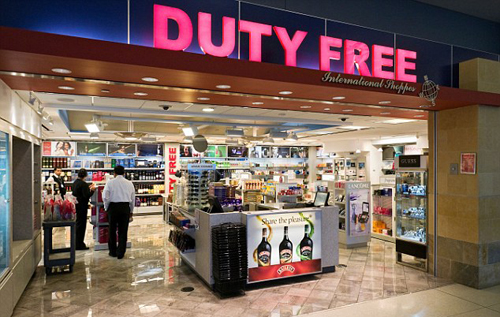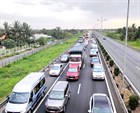Mandatory Conditions for Duty-Free Goods Business
The Ministry of Finance has just issued Circular No. 84/2017/TT-BTC providing detailed guidance on certain articles of Decree No. 68/2016/ND-CP dated July 1, 2016 of the Government of Vietnam.
According to the Circular, the subjects of application are organizations and individuals who have rights and obligations related to the business, expansion, contraction, transfer of ownership, movement, renaming, temporary suspension, and termination of duty-free goods business, warehouses, locations; customs authorities, customs officials; and other state agencies in coordinating state management of customs. Additionally, Circular 84 clearly states that the workplace of customs authorities at warehouses and locations is constructed by the organizations and individuals doing business in warehouses and locations, and must meet the regulatory conditions.
To be specific, the location should be within the area of the new or recognized warehouse and location, or within the same plot of land within the usage rights of the enterprise, convenient for customs inspection and supervision; have a minimum area of 20m2, separated from the surrounding areas, ensuring the inspection and supervision work of the customs authorities; For gathering, inspection, and supervision points of goods centralized at seaports, international airports, or international border gates, the customs office should have a minimum area of 50m2.

For warehouses and locations with a total area of 3 hectares or more, the organization or individual must arrange an area of at least 2,000 m2 (40m x 50m) for the operation of container scanner machines to ensure radiation safety and scanning operations. During the time the container scanner machine has not yet been moved to the operation area, the enterprise may still use this area for the exploitation and business activities of the warehouse. Moreover, the Circular specifies regulations for warehouses storing confiscated goods. Such warehouses must have a minimum area of 30m2, separated from warehouses storing other goods. For areas that inspect and supervise centralized postal and express delivery items, the warehouse for confiscated goods must have a minimum area of 10 m2.
If the warehouse for storing confiscated goods is built within a warehouse at a location planned or recognized, it must ensure the customs sealing policies, and the original condition and quality of the goods during storage. During the time there are no confiscated goods being stored, the organization or individual may use the confiscated goods warehouse to store other goods according to regulations.
For warehouses and locations with an area of more than 3 hectares and without a warehouse for confiscated goods, the organization or individual must arrange a separate area of at least 200 m2 to store vehicles and containers containing confiscated goods. The organization or individual may use this planned area for storing, exploiting goods when the area does not have confiscated goods. Circular 84/2017/TT-BTC takes effect from September 30, 2017.
Source: Lao dong thu do
- Ministry of Health of Vietnam issues Inspection Plan for 2025
- Vietnam: Classification of motor vehicles by purpose of use from January 1, 2025
- Assignment of duties of police officers commanding, directing traffic on road traffic routes in Vietnam in 2025
- Proactively strengthen the prevention and control of Diphtheria in Vietnam according to Official Dispatch 1285
- Continue to strengthen state management of e-commerce in Vietnam
- Information about patients in the medical examination and treatment management information system in Vietnam from January 1, 2027
-

- Notable documents of Vietnam in the previous week ...
- 17:22, 26/11/2024
-

- Ministry of Health of Vietnam issues Inspection ...
- 15:34, 26/11/2024
-

- Steps for data cleansing to issue organizational ...
- 15:23, 26/11/2024
-

- Vietnam: Classification of motor vehicles by purpose ...
- 14:59, 26/11/2024
-

- Assignment of duties of police officers commanding ...
- 14:30, 26/11/2024
 Article table of contents
Article table of contents
